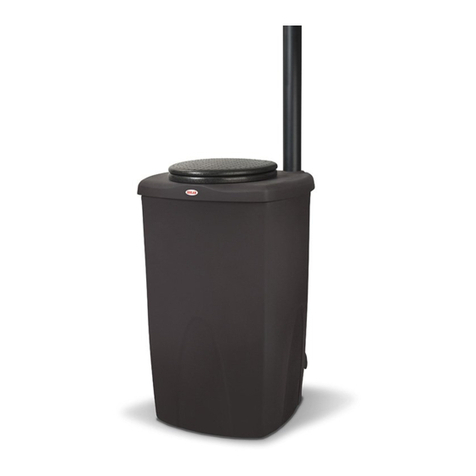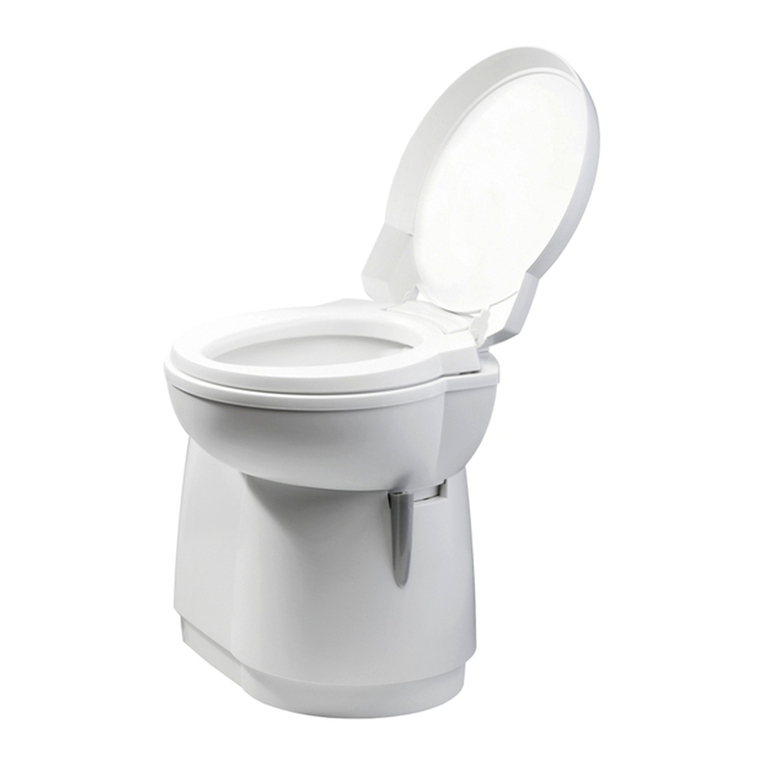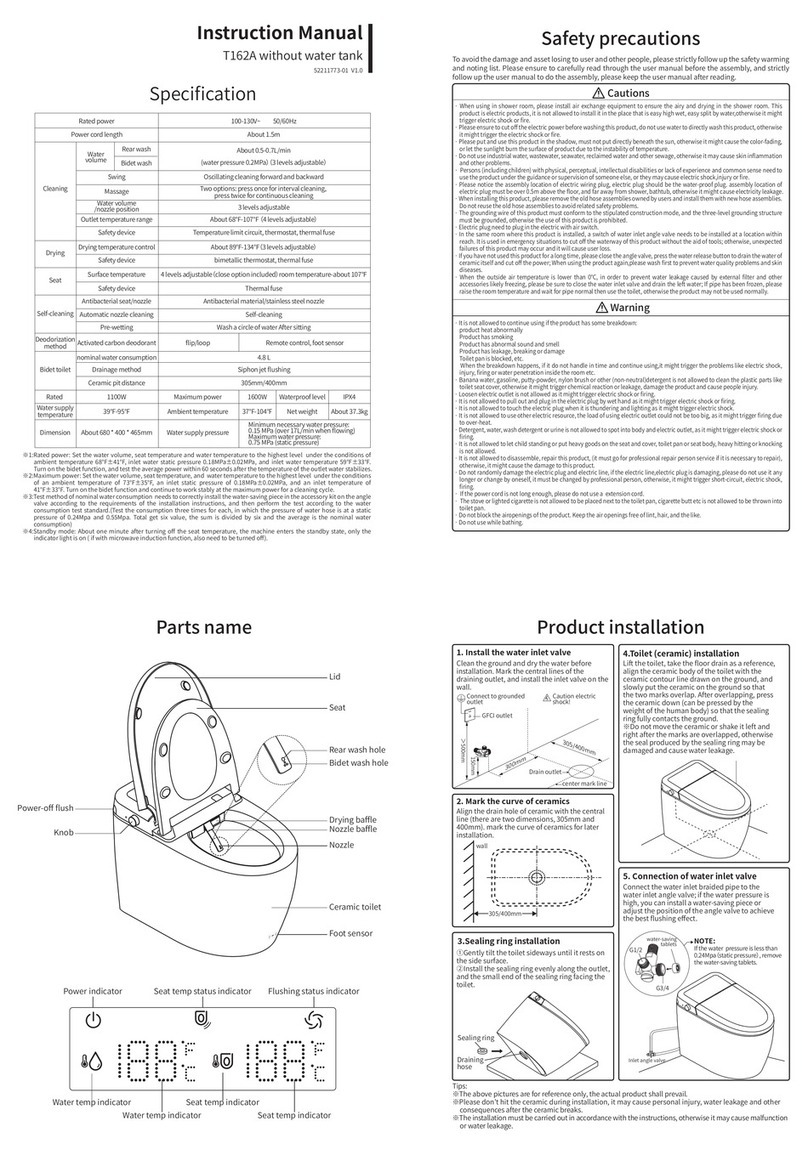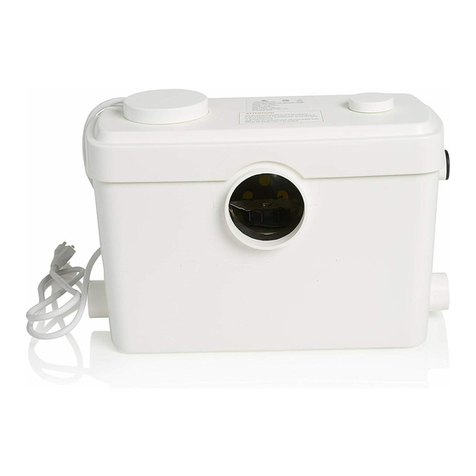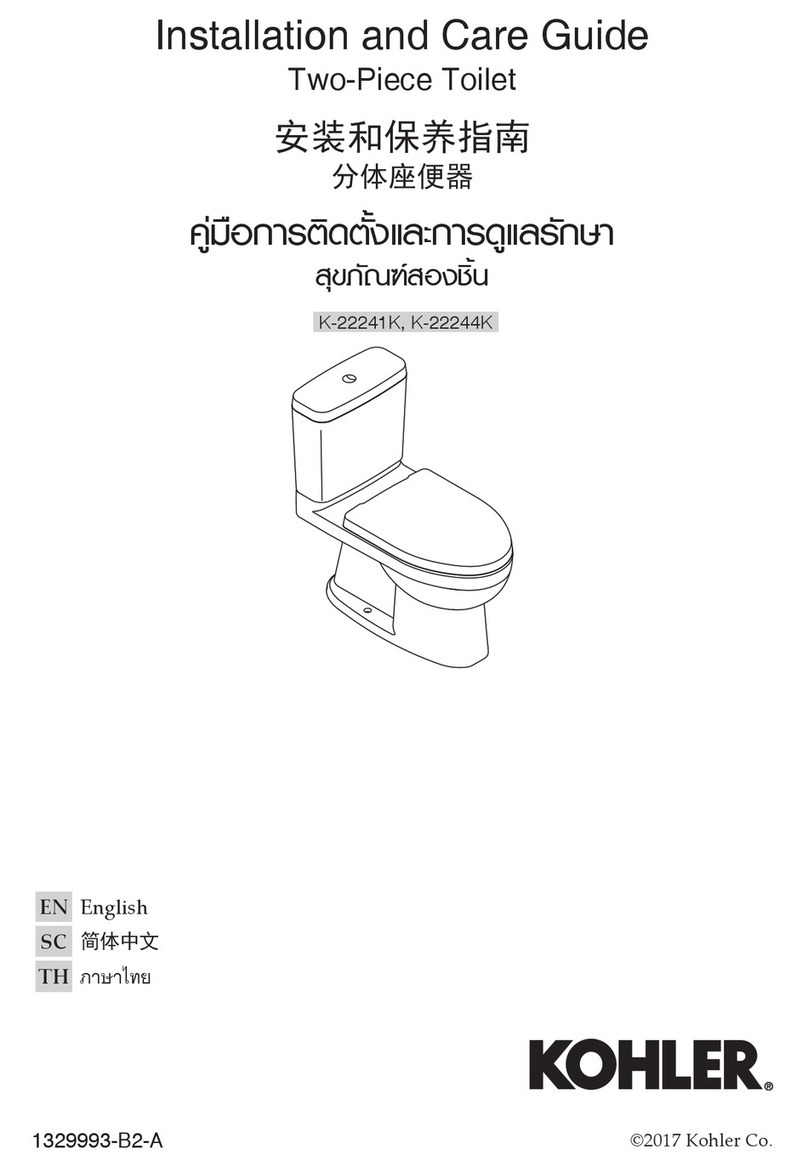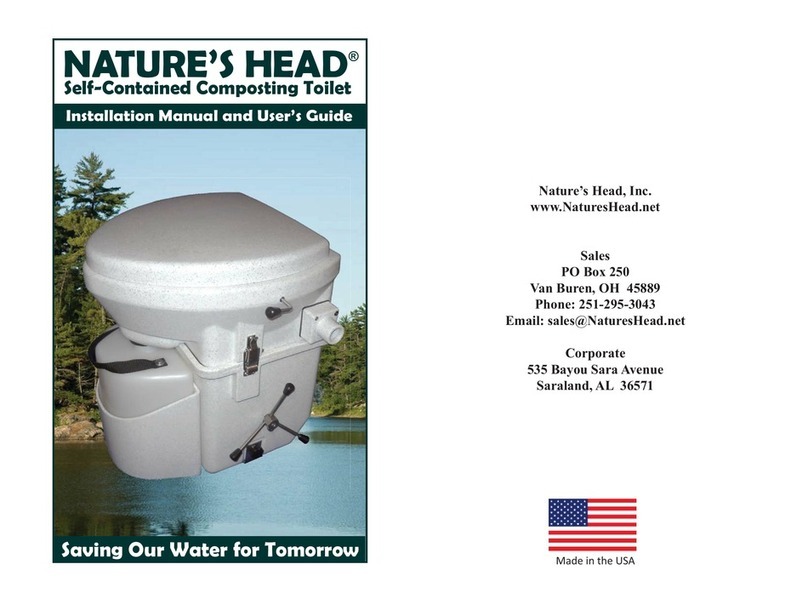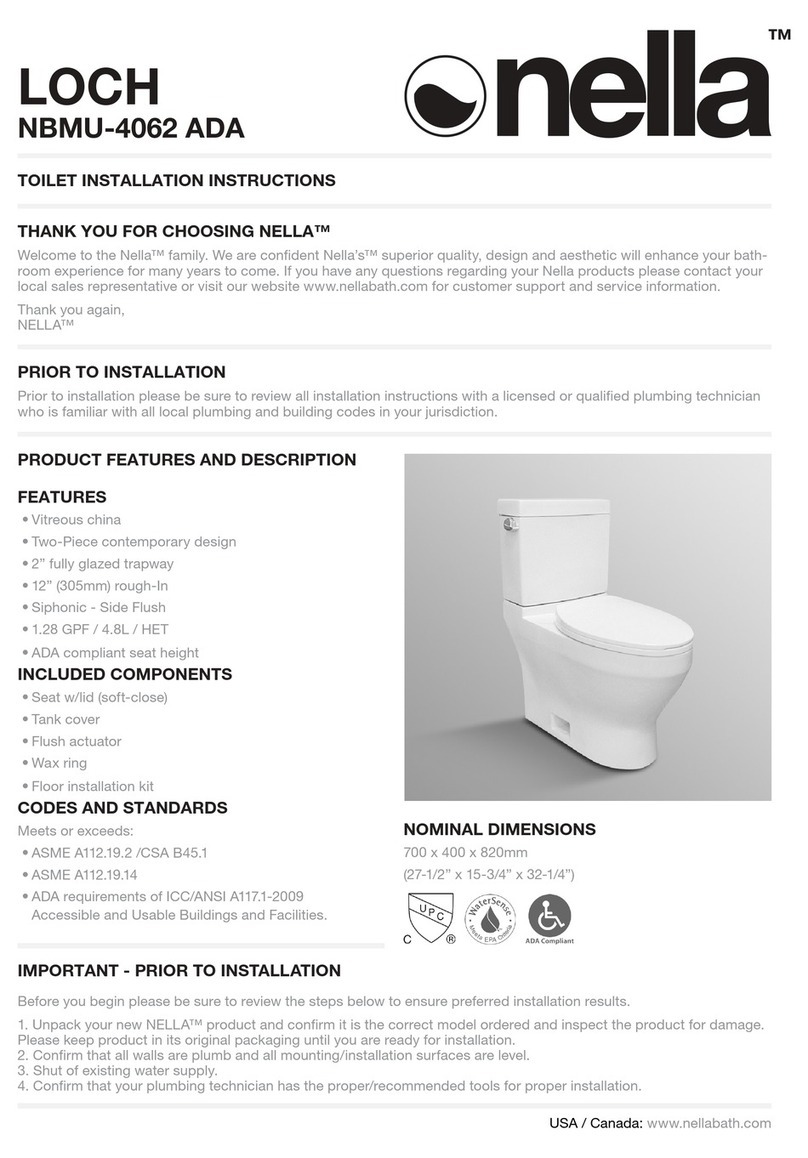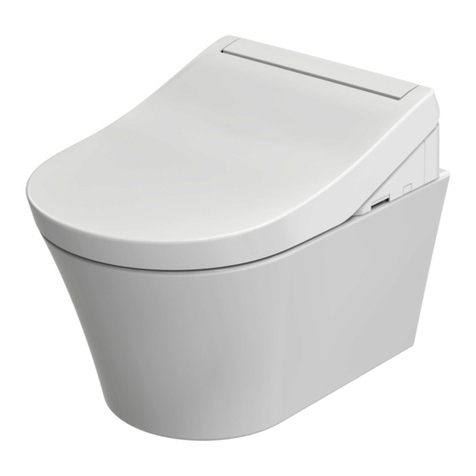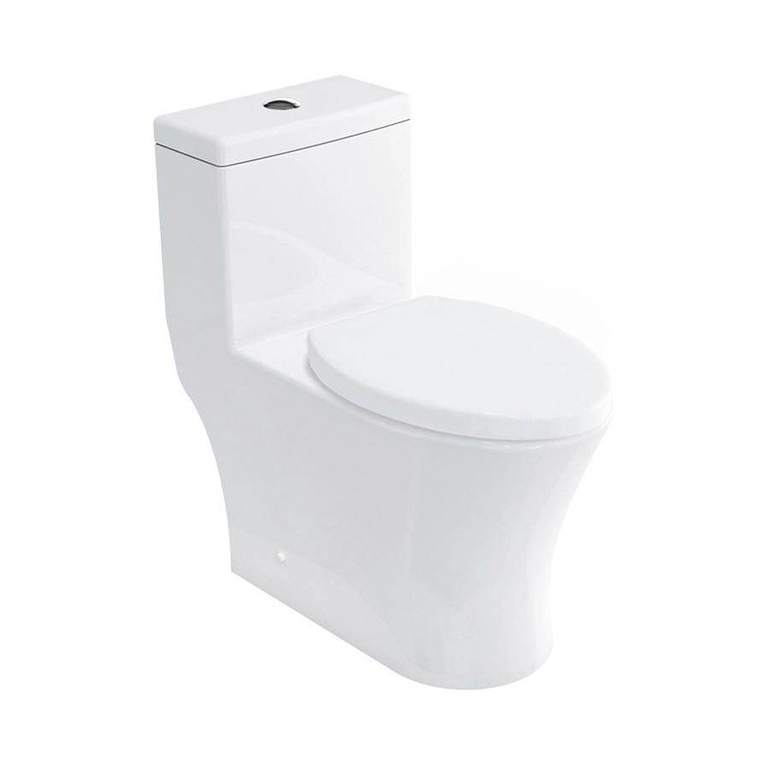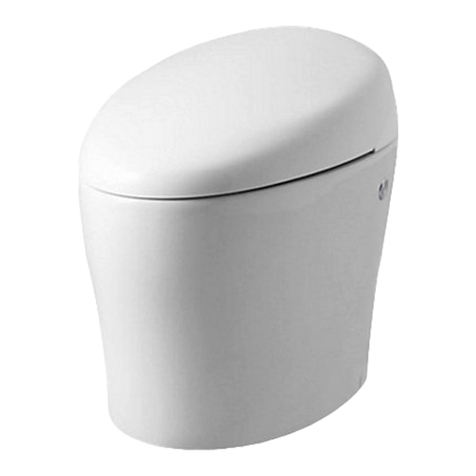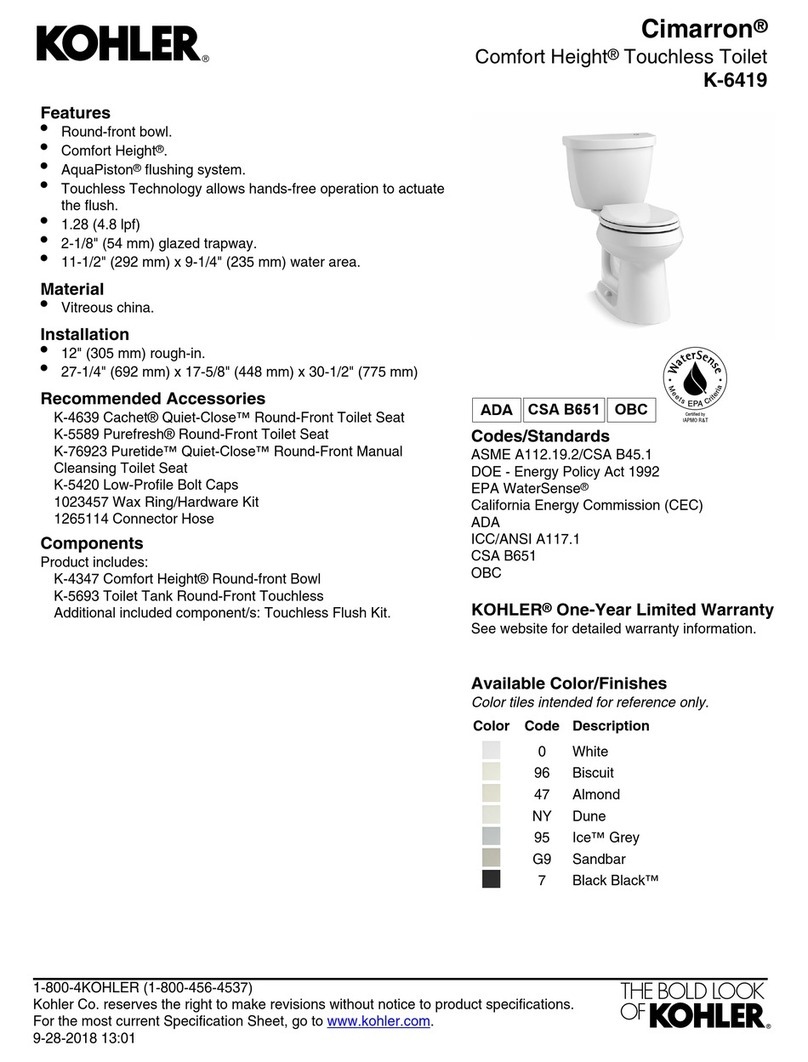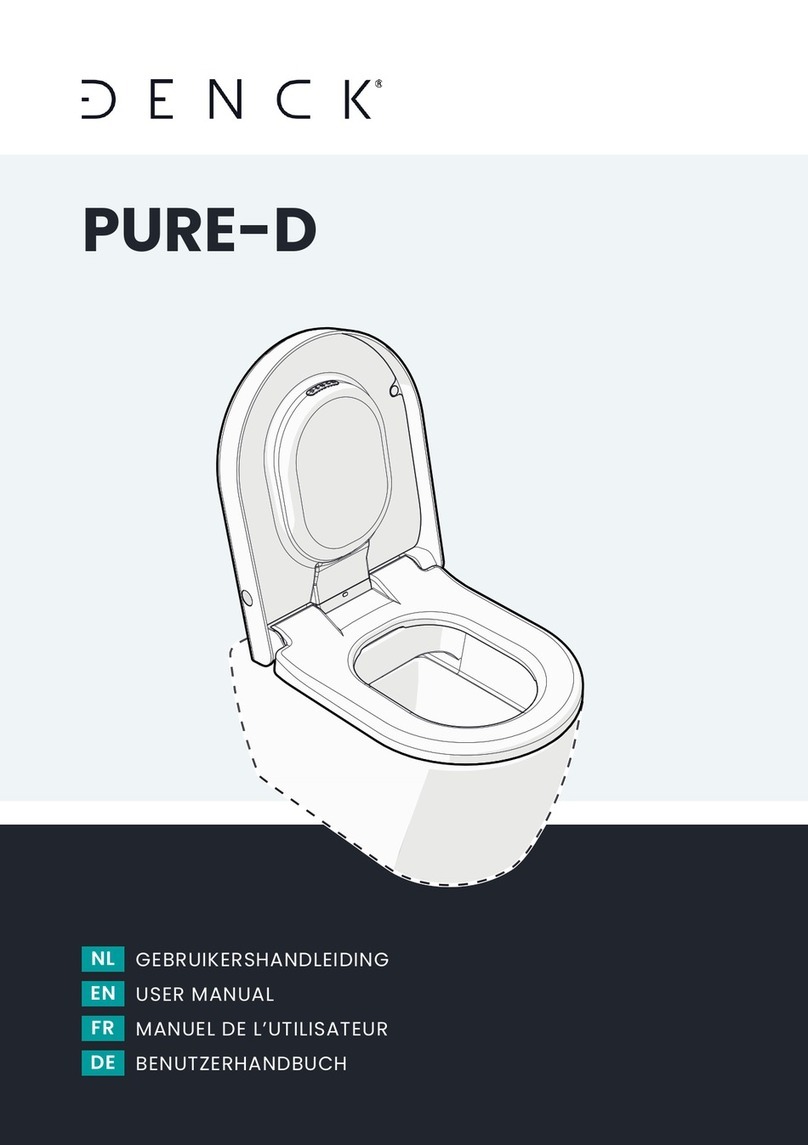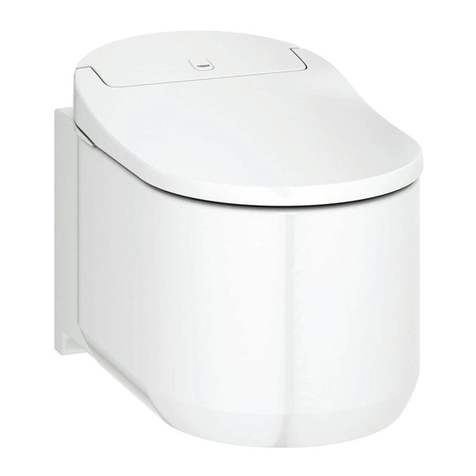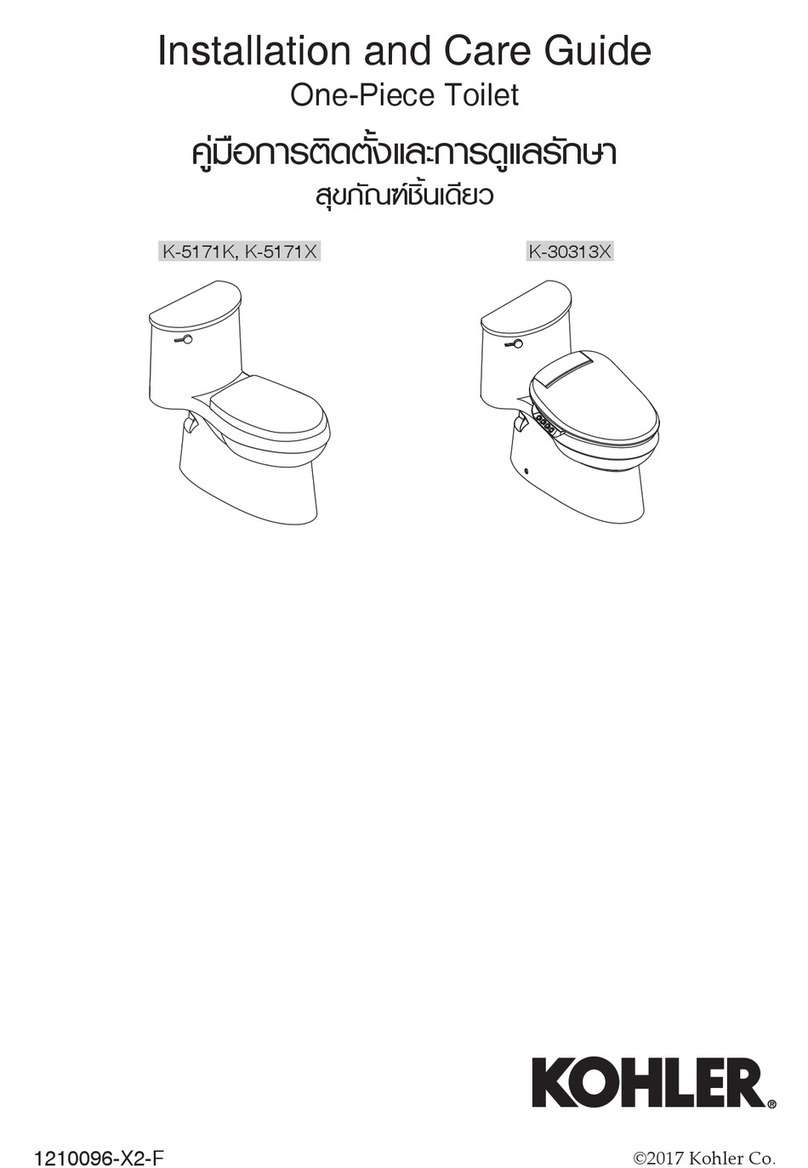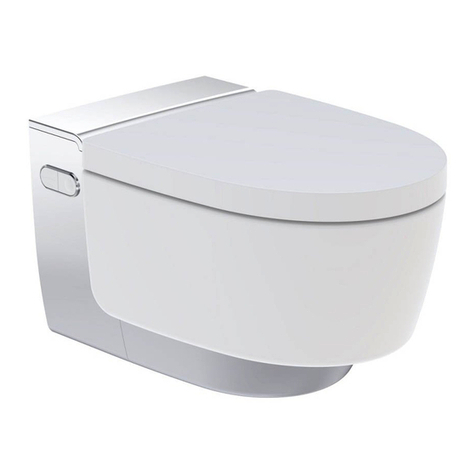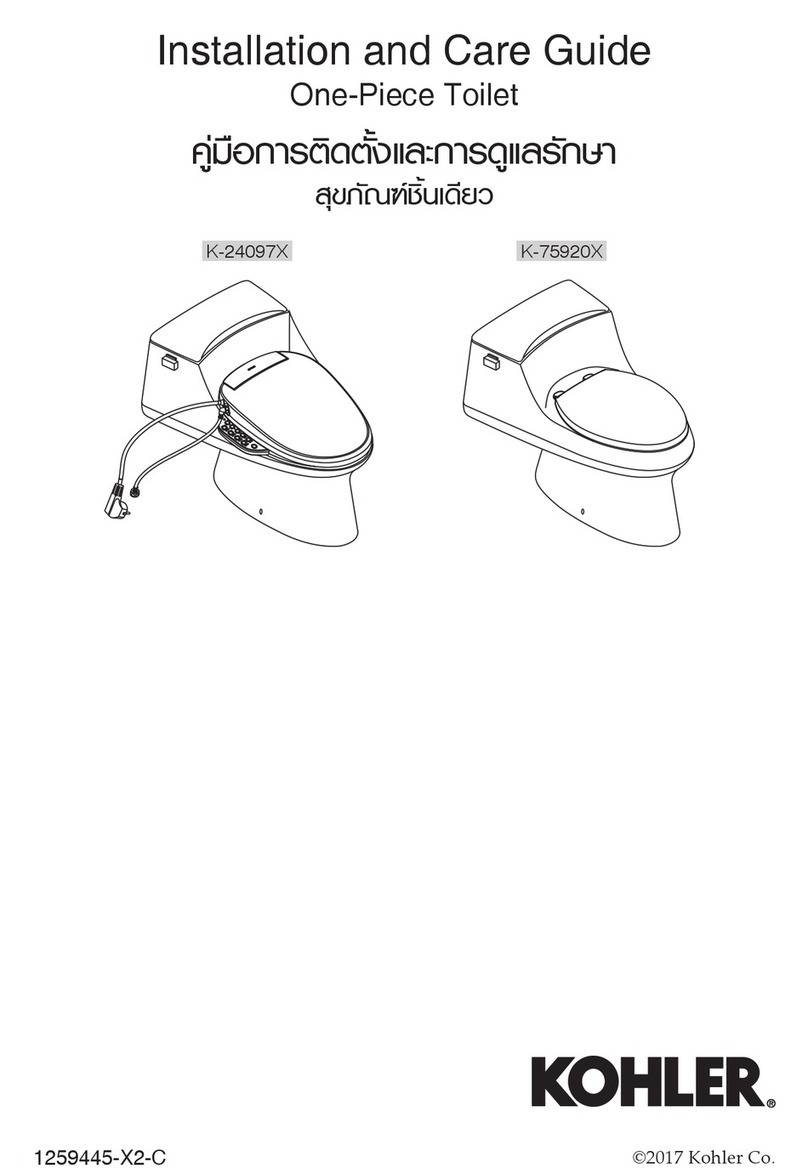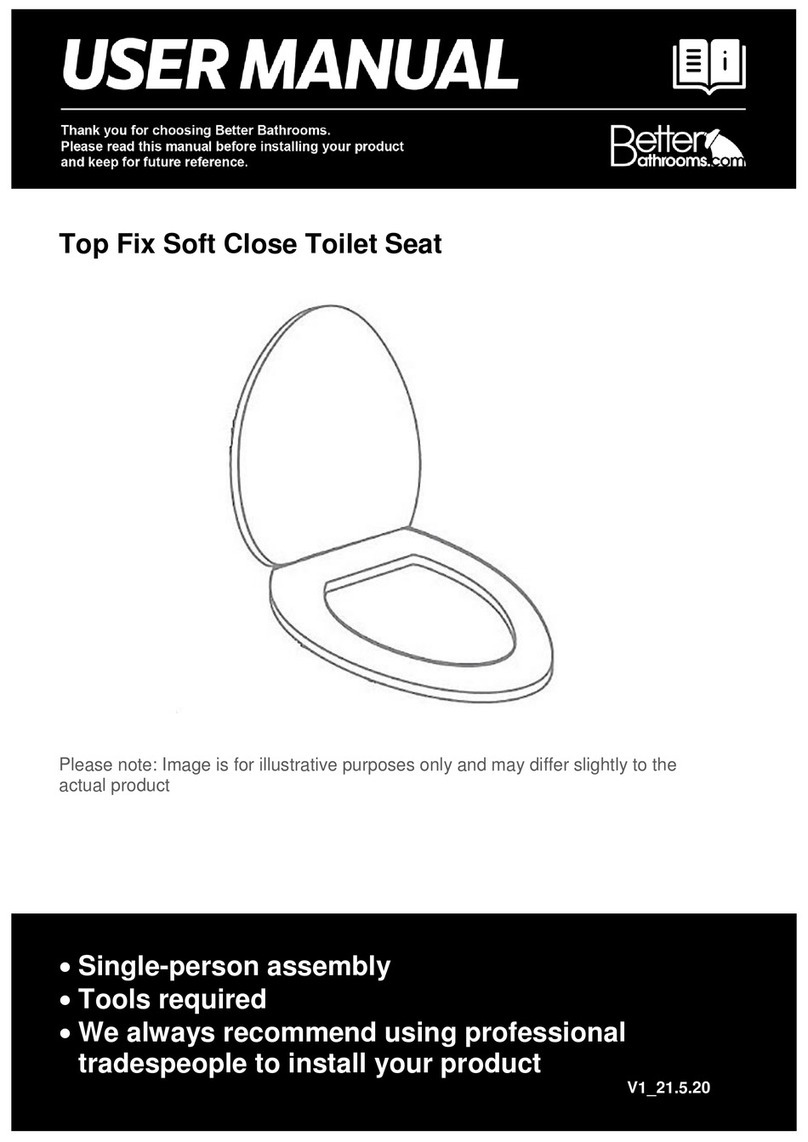
Page 12
Installation © 2013 Nature’s Head Inc.
Solid wastes should be removed from the storage base when the tank ap-
pears to be 3/4 full. One of the benefits of a composting toilet (unlike other
toilet systems) is that the longer you wait before emptying the more pleas-
ant the job will be. The solid wastes will be fully decomposed and will look
and smell like dirt. There may still be some paper remnants depending on
the amount of time that was allowed for composting. Paper products take
considerably more time to decompose than the solid wastes.
With the bottle assembly removed,
lift the seat unit several inches and
slide it to the left to disengage the
slip hinge. (You may need to unhook
your vent hose and power supply if
it is necessary to move the bowl to
the side.) Remove the knobs from
the mounting brackets at each side of
the base and the base is now ready to
empty. One of the simplest methods
of emptying is to place a 13 gallon
kitchen bag over the opening of the
base (NOTE: the bag does NOT go in
the base.) Figure 9. The bag should Figure 9
fit tightly over the rim and allow you to invert the base and empty the con-
tents into the bag without spillage. This is especially useful when the toilet
is used for boats and other mobile units, as removing the toilet is
unnecessary.
It is unnecessary to clean the interior of the solid waste container as com-
posting will continue from the residual matter clinging to the sides. Clean-
ing the base unit, especially with any chemicals, may inhibit its ability to
generate the good bacteria that is breaking down the solid wastes. Simply
empty, put in more peat moss, and re-assemble your toilet.
The recommended procedure for disposing of the contents of the solid
waste tank is placing it in a proper composting bin to allow it to fully
decompose. When traveling in a boat or RV this may not be practical.
The contents of the solid waste tank may be safely placed into a conven-
tional dumpster if it has been allowed to compost fully and is bagged and
sealed. When fully composted, the solid wastes may be used to fertilize
non-ingestible plantings. Placing human waste compost on edible plants or
vegetables is not recommended.
EMPTYING, Continued
Page 11
Usage
© 2013 Nature’s Head Inc.
All urine has an odor. It will not be noticed with normal use. It will be
present when the storage container is open to the air for emptying. For
persistent urine odors to the container the addition of 1 tablespoon of raw
sugar to the tank will reduce this odor.
After solid waste addition, the peat moss or coconut fiber must be agitated
2-3 revolutions in order to mix the waste into the compost and promote the
composting process. Contents of the solid waste container must be kept
moist, not wet, and remain separated from the liquid waste. If the toilet is
functioning correctly the composted matter will have a musty or soil-like
odor and the visual appearance will be very similar to that of the original
peat moss. If the compost is staying wet and you have odor problems, the
solids tank is becoming contaminated with urine and steps must be taken
to prevent this. This is not normal for the toilet. If this problem persists,
and you are unable to determine how it is becoming contaminated, please
contact us for help.
Vomiting and diarrhea, if not persistent, are unlikely to affect the head
function. If increased wetness of the compost results, the situation may be
corrected with the addition of a small amount of dry compost medium.
EMPTYING
The liquid waste vessel will contain approximately 2.2 gallons of urine.
The translucent material of the container allows easy visualization of the
liquid level.
To empty the liquid waste container: 1) Release the latches located at both
front sides of the unit which secure the bowl to the base. 2) Raise the bowl
to an angle of approximately 45 degrees, install the cap, and remove the
bottle. 3) Dispose of the contents in an appropriate manner. The urine
bottle maybe emptied into a conventional toilet or other appropriate facil-
ity. Many books and articles have been written on the benefits of using
diluted urine as a fertilizer. This may also be part of your environmental
plan for disposing of wastes in a cabin situation.
Should overflow of the liquid waste container occur the liquid will remain
confined to the container base so long as the overflow is not excessive.
The liquid tank should be emptied frequently and rinsed with clear water.
Allowing urine to remain in the storage container for extended periods is
unwise as this will result in increased odor production. If the toilet is used
in combined bath/shower, you may wish to drill a drain hole in the urine
tank holder if water accumulation becomes a problem.
USAGE

